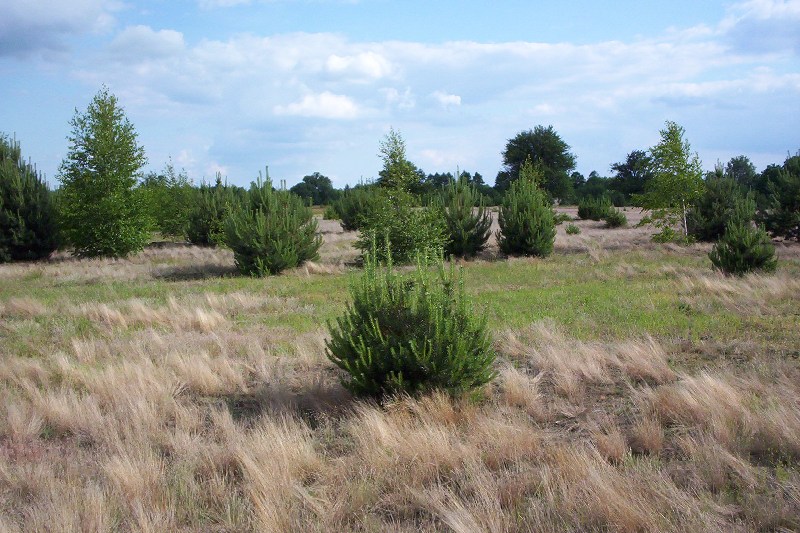Seral Communities on:
[Wikipedia]
[Google]
[Amazon]
 A seral community is an intermediate stage found in
A seral community is an intermediate stage found in
 A seral community is an intermediate stage found in
A seral community is an intermediate stage found in ecological succession
Ecological succession is the process of change in the species structure of an ecological community over time. The time scale can be decades (for example, after a wildfire) or more or less.
Bacteria allows for the cycling of nutrients such as ca ...
in an ecosystem advancing towards its climax community. In many cases more than one seral stage evolves until climax conditions are attained. A prisere is a collection of seres making up the development of an area from non-vegetated surfaces to a climax community.
A seral community is the name given to each group of plants within the succession. A primary succession describes those plant communities that occupy a site that has not previously been vegetated. These can also be described as the pioneer community. Computer modeling is sometimes used to evaluate likely succession stages in a seral community.
Depending on the substratum and climate, a seral community can be one of the following:
; Hydrosere
A hydrosere is a plant succession which occurs in an area of fresh water such as in oxbow lakes and kettle lakes. In time, an area of open freshwater will naturally dry out, ultimately becoming woodland. During this change, a range of different lan ...
: Community in water
; Lithosere A lithosere (a sere originating on rock) is a plant succession that begins life on a newly exposed rock surface, such as one left bare as a result of glacial retreat, tectonic uplift as in the formation of a raised beach, or volcanic eruptions. Fo ...
: Community on rock
; Psammosere: Community on sand
; Xerosere
Xerosere is a plant succession that is limited by water availability. It includes the different stages in a ''xerarch succession''. Xerarch succession of ecological communities originated in extremely dry situation such as sand deserts, sand dune ...
: Community in dry area
; Halosere: Community in saline body (e.g. a marsh)
Examples
Seral communities in secondary succession can be seen in a recently loggedconifer
Conifers are a group of conifer cone, cone-bearing Spermatophyte, seed plants, a subset of gymnosperms. Scientifically, they make up the phylum, division Pinophyta (), also known as Coniferophyta () or Coniferae. The division contains a single ...
ous forest. During the first two years, grasses, heaths and herbaceous
Herbaceous plants are vascular plants that have no persistent woody stems above ground. This broad category of plants includes many perennials, and nearly all annuals and biennials.
Definitions of "herb" and "herbaceous"
The fourth edition of t ...
plants such as fireweed will be abundant. After a few more years shrub
A shrub (often also called a bush) is a small-to-medium-sized perennial woody plant. Unlike herbaceous plants, shrubs have persistent woody stems above the ground. Shrubs can be either deciduous or evergreen. They are distinguished from trees ...
s will start to appear; and about six to eight years after clearing, the area is likely to be crowded with young birches. Each of these stages can be referred to as a seral community.
In the far western part of North America
North America is a continent in the Northern Hemisphere and almost entirely within the Western Hemisphere. It is bordered to the north by the Arctic Ocean, to the east by the Atlantic Ocean, to the southeast by South America and the Car ...
, chaparral
Chaparral ( ) is a shrubland plant community and geographical feature found primarily in the U.S. state of California, in southern Oregon, and in the northern portion of the Baja California Peninsula in Mexico. It is shaped by a Mediterranean c ...
plant communities are typically controlled by periodic natural wildfires. In the southern portion of the Coast Ranges
The Pacific Coast Ranges (officially gazetted as the Pacific Mountain System in the United States) are the series of mountain ranges that stretch along the West Coast of North America from Alaska south to Northern and Central Mexico. Although the ...
and in Southern California chaparral
Chaparral ( ) is a shrubland plant community and geographical feature found primarily in the U.S. state of California, in southern Oregon, and in the northern portion of the Baja California Peninsula in Mexico. It is shaped by a Mediterranean c ...
, toyon is often a locally dominant taxon in seral communities transitional between coastal sage scrub
Coastal sage scrub, also known as coastal scrub, CSS, or soft chaparral, is a low scrubland plant community of the California coastal sage and chaparral subecoregion, found in coastal California and northwestern coastal Baja California. It is w ...
.
See also
* Allogenic succession * Autogenic succession * Frederic Clements *Plagioclimax
A Plagioclimax community is an area or habitat in which the influences of the humans have prevented the ecosystem from developing further. The ecosystem may have been stopped from reaching its full climatic climax or deflected towards a different c ...
References
{{DEFAULTSORT:Seral Community Ecological succession